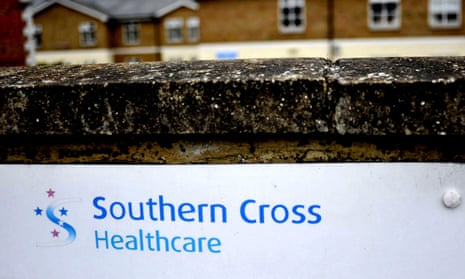My prediction for 2016 is that a major care provider is going to fail and we will see echoes of the Southern Cross collapse.
This year could see the strange rebirth of directly-provided social care as councils find themselves forced to act as provider of last resort.
The chancellor confirmed in the spending review that he was not going to inject the funding necessary to stop the fragile social care business model from finally breaking down. Care business owners have a simple choice: a planned or unplanned exit from an unsustainable, publicly-funded care market or a move into the self-funder market.
Chances are that a large care provider will fail this year, triggering a flight from publicly-funded care. This is already happening in some areas as care companies focus their investment on those who can afford to pay, or convert their care homes into general housing.
Of course, the picture will vary around the country. In the home counties the self-pay market is buoyant; in the North, not so much. In some areas this leaves care home operators setting the price, with self-funders outbidding councils for quality places.
For councils of all colours the obligation to act as provider of last resort may lead to a new trend of in-sourcing homecare and even care homes. Perhaps local authority trading companies such as the ones set up in Buckinghamshire and Essex offer a model?
Doing more of the same old care better and at lower cost will not be sufficient. It will require determined leadership to adopt the lessons of councils at the forefront of promoting well-being and self-care so vital to reducing demand.
An LGA report published just before Christmas highlights opportunities for greater productivity in social care. Based on fieldwork by Newton Europe, working alongside practitioners and clinicians, its main finding is that preventative services are key. Analysis of people at the front door of social care found that nearly one in three people classed as “avoidable hospital admissions” could be helped by preventative services alone, at a low cost.
Here lies the opportunity and the challenge. Better outcomes for the person, maintaining their wellbeing and independence, while reducing hospital admissions. But how to unlock the investment needed?
A mild winter may ease some of the pressures but as the NHS struggles with bringing the service back into financial balance the interface between health and social care will be a flash point. Delayed transfers of care in 2015 stayed stubbornly high and will increase throughout this year.
Integration has long been the holy grail of the health and care system. I hope in 2016 egos will be set aside, sovereignty pooled and integration made a shared ambition. Perhaps local authority trading companies could provide a vehicle for joint ventures between local government, NHS, housing and private investment to develop the new kinds of worker needed to provide integrated, technology-enabled support?
This year I hope housing will become more prominent in the discussion and delivery of new models of health and care. According to the Building Research Establishment (pdf), investing to improve the 3.5 million poor homes in England would save the NHS £1.4bn in the first year alone. The health benefits associated with improved housing include reduced problems with self-care and reduced anxiety and depression. Tenants also reported fewer GP visits following the move to improved housing, suggesting there may be considerable savings for health spending from improved housing. But realising the potential of housing is hamstrung by a lack of expertise and capacity among commissioners.
With last November’s Independent Age report (pdf) on migration exposing a 200,000 shortfall in the social care workforce by 2020, workforce is not just an NHS issue. Existing models of health and social care are not sustainable not simply for want of cash, but for want of staff.
I hope the new carers’ strategy recognises this when it emerges this year. It must square the circle between Jeremy Hunt’s call for families to shoulder more caring responsibilities – a line that has many carers throwing things at the TV – and the government’s commitment to longer working lives and gender equality in the labour market. Household and personal services are needed to help families balance work and family, but this will require a lead from the government to stimulate the market.
It is hard not to be gloomy, but the optimist in me still sees signs for hope. Oh, and 2016 will see a new health secretary installed in Whitehall, as Cameron reshuffles his cabinet.
